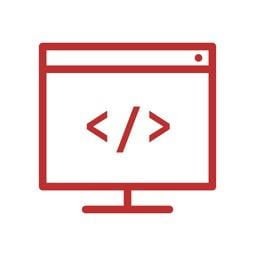PHP Development: A Comprehensive Guide to Building Dynamic Web Applications
PHP Development: A Comprehensive Guide to Building Dynamic Web Applications
PHP, a versatile and widely adopted programming language, has been a cornerstone of web development for decades. Its open-source nature, ease of learning, and robust capabilities have made it a popular choice for creating dynamic websites and applications.
PHP is a server-side scripting language, meaning its code is executed on the web server before being sent to the client's browser. This allows for complex operations and data manipulation to occur without the need for client-side processing.
Key Features and Advantages
- Open-Source: PHP is freely available, making it accessible to developers of all levels.
- Cross-Platform Compatibility: It runs on various operating systems, including Windows, Linux, and macOS.
- Large Community: A vast community of developers provides extensive support, resources, and libraries.
- High Performance: PHP is known for its efficiency and speed, especially when optimized.
- Versatility: It can be used for various web development tasks, from simple websites to complex web applications.
PHP is particularly well-suited for building a wide range of web applications, including:
- Dynamic Websites: Building interactive websites with features like user registration, login, and content management systems.
- E-commerce: Creating online stores with shopping carts, payment gateways, and product catalogs.
- Content Management Systems (CMS):: Developing platforms like WordPress, Drupal, and Joomla for managing website content.
- Web Applications: Building web-based applications such as social media platforms, project management tools, and online forums.
- API Development: Creating APIs (Application Programming Interfaces) to enable communication between different applications.
Here are some examples of specific PHP applications:
- Facebook: One of the largest social media platforms, built using PHP.
- WordPress: A popular content management system used by millions of websites, powered by PHP.
- Yahoo! Mail: A widely used email service built with PHP.
- Flickr: A photo sharing platform that heavily relies on PHP for its backend.
- Wikipedia: The largest online encyclopedia, using PHP for its search engine and other functionalities.
PHP Development Workflow
1. Planning:
- Define the project's scope, goals, and requirements.
- Create a detailed project plan outlining the timeline, milestones, and resources needed.
2. Design:
- Create wireframes and mockups to visualize the user interface.
- Design the database schema to store and manage data efficiently.
3. Development:
- Write PHP code using a suitable code editor or IDE.
- Follow coding standards and best practices to ensure code quality and maintainability.
4. Testing:
- Thoroughly test the application to identify and fix bugs.
- Conduct unit testing, integration testing, and user acceptance testing.
5. Deployment:
- Deploy the application to a web server.
- Configure the server environment and ensure proper deployment.
6. Maintenance:
- Regularly update and maintain the application.
- Monitor performance, address security vulnerabilities, and implement new features.
Popular PHP Frameworks
Frameworks are like pre-made toolkits that streamline PHP development. They offer ready-to-use components, best practices, and a structured approach, saving developers time and effort. Here are some top PHP frameworks to consider:
- Laravel: A full-stack framework known for its elegant syntax and ease of use. It provides a rich ecosystem of packages and tools, making development efficient and enjoyable.
- Symfony: A component-based framework that offers flexibility and modularity. It allows developers to build custom applications using its individual components or combine them to create larger projects.
- CodeIgniter: A lightweight framework that is ideal for smaller projects or developers who prefer a simpler approach. It offers a quick learning curve and minimal configuration.
- Yii: A high-performance framework that is suitable for large-scale applications. It provides a robust feature set, including caching, security, and internationalization.
PHP remains a cornerstone of web development, offering a powerful and versatile platform for building dynamic and scalable applications. Its open-source nature, large community, and continuous evolution ensure its relevance in the ever-changing landscape of web technology. By mastering PHP and leveraging its rich ecosystem of frameworks and tools, developers can create innovative and impactful web solutions.
Easyupload - Building Your Digital Brand The Power of a Website Design and Development Company
Docs Google - Building Your Digital Brand The Power of a Website Design and Development Company
Btafile - Building Your Digital Brand The Power of a Website Design and Development Company
Uploadnow - Building Your Digital Brand The Power of a Website Design and Development Company
Dz4up - Building Your Digital Brand The Power of a Website Design and Development Company
Mediafire - Building Your Digital Brand The Power of a Website Design and Development Company
Filefactory - Building Your Digital Brand The Power of a Website Design and Development Company
Dosya - Building Your Digital Brand The Power of a Website Design and Development Company
4shared - Building Your Digital Brand The Power of a Website Design and Development Company
K2s - Building Your Digital Brand The Power of a Website Design and Development Company
Ddownload - Building Your Digital Brand The Power of a Website Design and Development Company
Depositfiles - Building Your Digital Brand The Power of a Website Design and Development Company




Comments
Post a Comment